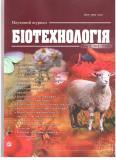ISSN 1995-5537

"Biotechnology" journal Vol. 2, No. 3, 2009
P. 74-79, Bibliography 15, Russian
Universal Decimal classification: 576.851.315.
IMMOBILIZATION OF BIOLUMINESCENT BACTERIA
ON THE NONORGANIC SUBSTANCES
AND ESTIMATION OF THEIR ABILITY FOR BIOTESTING
А. М. Каtsev, Е. Р. Аbduramanova, N. F. Starodub
Crimean State Medical University named after S. I. Georgievsky, Simpheropol
National University of Life and Environmental Science of Ukraine, Kyiv
In order to fulfill biotesting it was accom plished the immobilization of bioluminescent bacteria Vibrio fischeri F1, Vibrio harveyi Ms1, Photobacterium phosphoreum F2 and Photobacterium leiognathi Sh1 isolated from Black and Azov seas on the nonorganic substances, namely: calcium phosphate and carbonate as well as alumina oxide and hydroxide. It was stated that the total intensity of bioluminescence decreased up to 20–70% when calcium phosphate and alumina hydroxide were applied. If calcium carbonate and alumina oxide were used as sorbents, bioluminescence increased up to 120–160% in comparison with the control level. Both last sorbents were chosen for the next investigations and it was demonstrated that the maximal level of bacteria adsorption may be achieved after 2 hours, when their concentration exceeded 2,6·108 cells/ml. Bacterial cells are relatively strong fixed and they do not remove under washing with NaCl solution (3%). Similar sensitivity to the influence of toxic substances of adsorbed and free bacteria have been shown. It was demonstrated in the experiments with zinc chloride as traditional test for investigation of bioluminescent systems state.
Key words: bioluminescent bacteria, immobilization, nonorganic sorbents, sensitivity to zinc chloride, biosensors.
© Palladin Institute of Biochemistry of National Academy of Sciences of Ukraine, 2008

